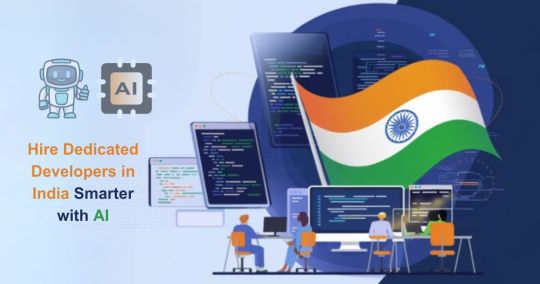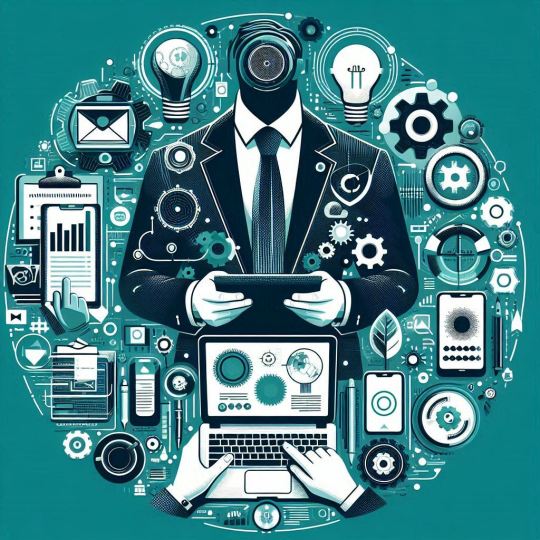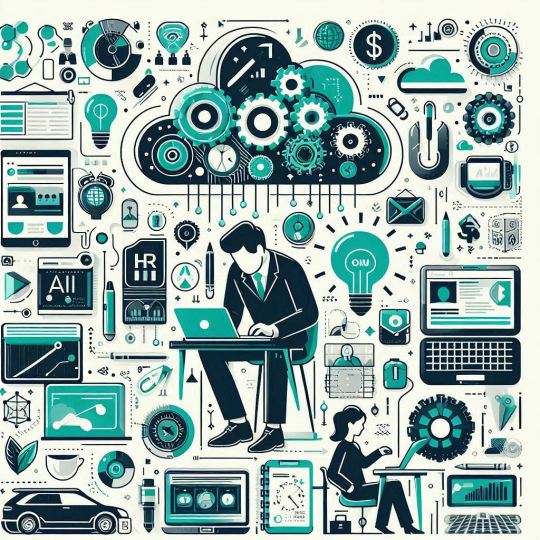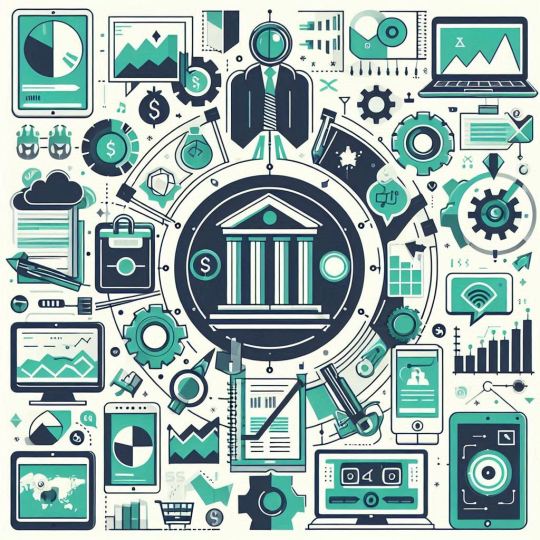#HR analytics tools
Explore tagged Tumblr posts
Text
The Role of People Analytics in Modern Management
No aspect of modern management moves ahead without making data-driven decisions. What’s more, the organisations of today are leveraging people analytics to optimise employee performance, improve employee engagement and bank on strategically created decision-making. That said, with access to the right tools, organisations can evaluate their own workforce, the current workforce trends, predict future needs and requirements and even boost overall efficiency. This blog further writes and showcases how people analytics is designed to model management strategies and revolutionise HR systems.
Absorbing & Digesting People Analytics in Management
People analytics is defined as the practice of using received data to measure, deeply analyse and improve the performance of your workforce. By gathering the accumulated insights from the HR on employees’ productivity, engagement and retention, organisations can make better and informed decisions that can lead to elevated business outcomes. Traditionally HR management used intuition and qualities, but the current workforce analytics enables leaders of companies to take advantage of hard data and use it to build as well as enhance strategic workforce planning strategies.
Organisations that employ these same workforce planning strategies are able to foresee incoming challenges, track the performance and create adaptable and actionable solutions. Multinational companies such as Google and Microsoft are already utilising employee analytics to polish their hiring, training and retention processes.
Decision-making That Is Driven By Data
Effective leadership today also depends how well the data-driven decision-making is. As mentioned above, by utilising HR analytics tools, companies are well-equipped to gain beneficial insights into employee conduct, performance, satisfaction and productivity levels. All of them help the manager make cognisant decisions rather than putting their faith on guesswork or subjective written or oral opinions.
For example, companies that proactively track employee engagement metrics can identify signs of burnout in the early stages and take measures at once. As per a study by Gallup, organisations with highly engaged employees experience a 23% jump in profitability. Workforce analytics help businesses understand which specific factors contribute to employee satisfaction and enable them to implement strategies which heighten motivation and retention.
Key Areas Where People Analytics Make a Striking Impact
Performance Analytics – Employees Calculating employee performance is no longer limited to annual reviews only. Organisations now have complete access to real-time performance metrics to track productivity status and identify areas of improvement. Performance analytics includes accessing key indicators such as completion rates, project efficiency and overall company objectives.
Planning Strategies – Workforce Ensuring that the right talent is in position to meet the desired business objective is workforce planning. People analytics assist organisations to anticipate future hiring needs, assess skill gaps and allocate resources accordingly and effectively.By methodically analysing turnover rates, recruitment trends and employee capabilities, companies have everything that is needed to create long-term workforce planning strategies. For example, a company facing high attrition rates in a specific department of their workforce can use HR data insights to find underlying issues and develop targeted strategies accordingly.
HR Data Insights – Talent Acquisition Business success comes down to hiring the right talent. Talent analytics strategies allow recruiters to recognise top candidates based on past hiring data, skills and their assessments and behavioural insights. With AI booming, AI-driven analytical tools have developed the capacity to analyse resumes, previous job performances and interview reviews to answer which candidates will fit the role perfectly. This can reduce hiring bias and improves the quality of the new hires. Companies such as Amazon use prognostic hiring models to match candidates with job roles that align with their skills and career goals.
Employee Engagement & Retention - Enhancement A motivated workforce is a productive workforce. People analytics in employee management helps organisations to observe employee engagement levels through pulse surveys, sentiment analysis and feedback tools.If it reveals that there’s a certain drop in engagement of certain teams, HR can follow-up with immediate action. Whether it is by addressing workplace or cultural problems, providing professional development programs or re-adjusting assigned workloads. Research by Harvard Business Review found that companies using people analytics for engagement see a 31% reduction in employee turnover.
The Future of People Analytics in Management
As technology continues to advance, the role of people analytics in management will become even more significant. Future trends include:
AI & Machine Learning Integration: With AI rising beyond expectations, AI-powered workforce analytics will enable prognostic modelling, helping companies to anticipate workforce trends and make proactive decisions.
Real-Time Employee Feedback: Businesses will implement AI-driven sentiment analysis tools to gauge employee satisfaction in real-time.
Remote Work Analytics: With hybrid and remote work becoming the norm, people analytics will help organizations optimise productivity and engagement for distributed teams.
Diversity & Inclusion Metrics: Companies will leverage HR data insights to track and improve diversity, equity and inclusion (DEI) initiatives.
How Can Organisations Make Use Of People Analytics Effectively
To successfully utilise the maximum potential of People Analytics, organisations should follow the following steps:
Invest in HR analytical tools that offer comprehensive analytical solutions.
Establish clear Key Performance Indicators (KPIs) that align accurately with your business objectives.
Train HR and Managers to interpret data and apply insights effectively.
Ensure Data Privacy and Compliance to preserve ethical standards while adhering to data protection regulations.
Foster a Data-driven Culture where decisions are taken after being informed by analytic tools rather than intuition alone.
Coming To The Conclusion
The integration of people analytics in management is transforming how organisations make decisions about talent, performance and engagement. By leveraging workforce analytics and HR data insights, companies can drive productivity, enhance employee experience, and develop more effective workforce planning strategies.
Data-driven decision-making is no longer optional, it’s essential for staying competitive in today’s business environment. As technology continues to evolve, organisations that embrace people analytics will without a doubt be better equipped to steer workforce challenges and build a thriving, engaged workforce.
Are you ready to harness the power of people analytics in your organization? Start implementing the right HR analytics tools today and unlock the full potential of your workforce.
0 notes
Text
Maximizing ROI from HR Data Centers: Driving Value for the C-Suite

In the dynamic landscape of modern business, the role of HR data centers has evolved beyond conventional administrative functions. Today, these data hubs play a pivotal role in shaping strategic decisions, driving efficiency,
Also Read: 5 Ways AI is Transforming Talent Acquisition
and maximizing return on investment (ROI) for organizations. This article explores the critical intersection of HR and data centers, delving into the nuances of people analytics, HR analytics tools, and innovative data center solutions. The insights presented here aim to showcase the immense potential of HR data centers in delivering tangible value to organizations.
Data-Center Evolution: Shaping the Future of HR According to a recent study, organizations leveraging cloud data centers witness a 25% increase in the speed and accuracy of HR analytics, leading to more informed decision-making.
The evolution of data centers, including cloud data centers and AWS data centers, has significantly impacted how HR functions operate. Modern HR data centers go beyond conventional storage; they serve as the backbone for people analytics, allowing organizations to derive actionable insights from vast pools of HR data. For instance, cloud data centers provide scalable and flexible infrastructure, enabling HR analytics tools to process and analyze massive datasets efficiently.
HR Analytics: A Strategic Imperative The integration of HR analytics into data center architecture is pivotal for organizations seeking a competitive edge. HR analytics encompasses a range of tools and methodologies that enable the C-suite to make data-driven decisions concerning talent management, workforce planning, and employee engagement. Leading companies leverage HR analytics to develop comprehensive HR dashboards that offer real-time insights into key performance indicators and workforce trends.
Netflix strategically utilizes HR analytics to personalize content recommendations for employees, fostering a culture of individualized professional development and growth.
Data Center Networking: Facilitating Seamless HR Operations Efficient data center networking is crucial for seamless HR operations. It ensures that HR analytics tools can access and process data in real time, providing accurate insights. Organizations with streamlined data center networking report a 30% reduction in the time required to complete HR processes, enhancing overall operational efficiency.
The integration of talent analytics into data center services enables organizations to optimize HR processes, from recruitment to employee retention.
Data Center Management and Solutions: Navigating the HR Landscape Effective data center management is central to harnessing the full potential of HR data. Data center solutions offer comprehensive services, from storage to automation, supporting HR analytics initiatives. Leading data center solution companies, like IBM and Cisco, have pioneered HR-centric solutions, emphasizing the role of data centers in transforming HR operations. This showcases how data center solutions drive innovation, such as predictive analytics for workforce planning and automated reporting for compliance.
Explore HRtech News for the latest Tech Trends in Human Resources Technology.
0 notes
Text

Ever felt like a detective trying to crack the code on why your star employees are suddenly handing in their notices? You're not alone. Employee Turnover Prediction has become a crucial part of maintaining a vibrant and productive workplace. It's like trying to predict a surprise explosion – you know it could happen, but you're not quite sure when or why. The key? Understanding the warning signs and underlying issues that lead to that final "I'm outta here."
But how do we do this? It's not as daunting as it seems. Start by diving deep into your company's data. Look for patterns in exit interviews, employee satisfaction surveys, and performance metrics. Are there common themes? Maybe it's a lack of growth opportunities, or perhaps the work-life balance is more myth than reality. This is where the detective work pays off, allowing you to implement strategies that can significantly reduce turnover rates.
0 notes
Text
The Evolution of HR Technology: A Look at Modern HRMS
The landscape of human resource management has undergone a significant transformation over the years. From manual processes and paper records to sophisticated Human Resource Management Systems (HRMS), technology has revolutionized the way HR functions. Here's a look at how HR technology has evolved and why modern HRMS solutions are game-changers for businesses.
The Early Days of HR Technology
Initially, HR tasks were heavily dependent on manual processes. Payroll calculations, employee records, and recruitment were managed through spreadsheets and paper files. While this approach worked, it was time-consuming, prone to errors, and inefficient for scaling businesses.
The Rise of HR Software Solutions
In the 1990s, the introduction of basic HR software paved the way for automation in payroll, attendance tracking, and record-keeping. These systems significantly reduced administrative workload but were often standalone solutions, lacking integration and advanced functionality.
Modern HRMS: An All-in-One Solution
Today, HRMS represents a holistic approach to human resource management, combining multiple functionalities into a unified platform. These systems are designed to streamline and automate complex HR tasks, improve efficiency, and enhance the employee experience.
Key Features of Modern HRMS
Employee Data Management: Centralized storage of employee information for easy access and updates.
Payroll and Benefits Administration: Automation of salary processing, tax calculations, and benefits management.
Recruitment and Onboarding: Tools for posting job ads, tracking candidates, and onboarding new hires seamlessly.
Performance Management: Advanced analytics for tracking employee performance and setting development goals.
Employee Self-Service Portals: Empowering employees to manage their own leave, attendance, and personal details.
Compliance Tracking: Ensuring adherence to labor laws and regulations with minimal manual effort.
Integration with Other Tools: Compatibility with third-party applications for enhanced functionality.
Benefits of Modern HRMS
Efficiency and Productivity: Automation reduces repetitive tasks, freeing up HR professionals for strategic planning.
Data-Driven Decision Making: Advanced analytics provide insights into workforce trends and performance metrics.
Improved Employee Engagement: Self-service features and streamlined processes enhance employee satisfaction.
Scalability: Modern HRMS platforms are designed to grow with the organization, making them ideal for businesses of all sizes.
Future Trends in HR Technology
As technology continues to evolve, HRMS is expected to integrate more advanced features, such as:
Artificial Intelligence (AI): Predictive analytics for hiring, retention, and employee development.
Mobile-First Solutions: Ensuring accessibility on the go.
Enhanced Employee Wellness Tools: Integrating mental health and wellness tracking into HR systems.
Conclusion
The evolution of HR technology from manual processes to modern HRMS has been a transformative journey. Today’s HRMS solutions empower organizations to manage their workforce efficiently while fostering a better workplace environment. Investing in the right HRMS is not just a technological upgrade—it’s a strategic move towards building a smarter and more agile organization.
More info: https://ahalts.com/solutions/hr-services

#HR technology#HRMS evolution#Modern HR systems#HR automation#Workforce management#Employee management tools#HR software trends#Human resource innovation#Payroll automation#HR analytics#HR compliance#Recruitment technology#Employee engagement#HRIS vs. HRMS
0 notes
Text
Streamline your financial planning with SAP BPC and Group Reporting solutions! We, at INK IT Solutions, offer an enhanced platform to develop, integrate, and extend SAP services and applications. For more information, you can visit our website https://inkitsolutions.com/ or call us at 9891663202
0 notes
Text
Top 7 Strategies for Effective IT Procurement Services Negotiation
This blog covers seven strategies to enhance IT procurement negotiations, including building supplier relationships, leveraging market insights, and ensuring transparency to achieve better deals and reduce risks.
#contingentworkforce#vendormanagement#talentacquisition#directsourcing#IT procurement services#vendor management tools#vendor management software#vendor management solutions#vendors#vms#vendor management system#contractmanagement#data analytics#hr management#hr software
0 notes
Text
Revolutionizing HR Processes: A Dive into Connectiv HRM Software
Introduction
In today's fast-paced business world, efficient Human Resource Management (HRM) is crucial for the success of any organization. With the rise of technology, HR professionals are turning to innovative software solutions to streamline their processes and improve productivity. One such cutting-edge solution is Connectiv HRM Software, designed to revolutionize HR practices and simplify the management of human resources. Let's explore how Connectiv HRM Software can transform your HR department and elevate your organization's performance.
Benefits of Connectiv HRM Software
Streamlined HR Processes
Connectiv HRM Software is a comprehensive platform that centralizes all HR functions, from recruitment to employee retention. By automating repetitive tasks and providing real-time insights, Connectiv HRM Software allows HR professionals to focus on strategic initiatives and employee engagement. With features like payroll integration and advanced HR tools, Connectiv streamlines workflows and enhances efficiency across the organization.
Advanced HR Tools Integration
Connectiv HRM Software offers a wide range of advanced tools to simplify HR operations, such as performance management, employee training, and workforce planning. These tools provide valuable data and analytics to HR professionals, enabling them to make informed decisions and drive organizational growth. With Connectiv, organizations can leverage the power of data to optimize their HR strategies and achieve their business objectives.
Cloud-Based Accessibility
Connectiv HRM Software is a cloud-based solution, providing anytime, anywhere access to HR resources and information. This accessibility enables remote working, collaboration, and seamless communication among employees and HR professionals. With Connectiv, organizations can embrace the flexibility of cloud technology and empower their workforce to work efficiently from any location.
Features of Connectiv HRM Software
HR Project Management Tools
Connectiv HRM Software includes robust project management tools that allow HR professionals to plan, execute, and monitor HR initiatives effectively. From recruitment campaigns to employee onboarding, these tools streamline project workflows and ensure timely execution of HR projects. With Connectiv, HR teams can collaborate seamlessly and deliver quality results on time.
Payroll Integration
One of the key features of Connectiv HRM Software is its seamless integration with payroll systems, enabling accurate and efficient payment processing. By automating payroll tasks and calculations, Connectiv eliminates manual errors and ensures compliance with regulatory requirements. With Connectiv, organizations can streamline their payroll processes and enhance employee satisfaction through timely and accurate payments.
Mobile App HR Portal
Connectiv HRM Software offers a user-friendly mobile app HR portal that allows employees to access HR information and services on the go. From viewing pay stubs to submitting leave requests, employees can conveniently manage their HR-related tasks through the mobile app. With Connectiv, organizations can empower their employees with self-service tools and enhance their overall HR experience.
Conclusion
In conclusion, Connectiv HRM Software is a game-changer for organizations seeking to elevate their HR management practices. With its advanced HR tools, payroll integration, and cloud-based accessibility, Connectiv streamlines HR processes, enhances productivity, and drives organizational success. By embracing Connectiv, organizations can transform their HR department into a strategic asset that fuels growth and innovation. Take your HR management to the next level with Connectiv HRM Software and unlock the full potential of your workforce.
Ready to revolutionize your HR processes with Connectiv HRM Software? Schedule a demo today and experience the power of advanced HR management tools.


#hrm software#connectiv hrm#hrm management#hrm moile app#hr analytics#hrm tools#hrm payroll integration#hrms software#hrm project management
0 notes
Text
Empowering career choices is at the forefront of Talismatic's mission, utilizing cutting-edge labor market analytics to revolutionize decision-making. Through comprehensive data analysis and insights, Talismatic offers individuals invaluable tools to navigate today's dynamic job market. With its platform, users can explore emerging trends, identify lucrative opportunities, and align their skills with in-demand roles. Talismatic empowers professionals to make informed career decisions, leveraging real-time data on job demand, salary trends, and industry requirements. By harnessing the power of labor market analytics, Talismatic equips individuals with the knowledge and confidence to pursue fulfilling and rewarding career paths. Discover your potential with Talismatic today.
0 notes
Text
Hire Dedicated Developers in India Smarter with AI
Hire dedicated developers in India smarter and faster with AI-powered solutions. As businesses worldwide turn to software development outsourcing, India remains a top destination for IT talent acquisition. However, finding the right developers can be challenging due to skill evaluation, remote team management, and hiring efficiency concerns. Fortunately, AI recruitment tools are revolutionizing the hiring process, making it seamless and effective.

In this blog, I will explore how AI-powered developer hiring is transforming the recruitment landscape and how businesses can leverage these tools to build top-notch offshore development teams.
Why Hire Dedicated Developers in India?
1) Cost-Effective Without Compromising Quality:
Hiring dedicated developers in India can reduce costs by up to 60% compared to hiring in the U.S., Europe, or Australia. This makes it a cost-effective solution for businesses seeking high-quality IT staffing solutions in India.
2) Access to a Vast Talent Pool:
India has a massive talent pool with millions of software engineers proficient in AI, blockchain, cloud computing, and other emerging technologies. This ensures companies can find dedicated software developers in India for any project requirement.
3) Time-Zone Advantage for 24/7 Productivity:
Indian developers work across different time zones, allowing continuous development cycles. This enhances productivity and ensures faster project completion.
4) Expertise in Emerging Technologies:
Indian developers are highly skilled in cutting-edge fields like AI, IoT, and cloud computing, making them invaluable for innovative projects.
Challenges in Hiring Dedicated Developers in India
1) Finding the Right Talent Efficiently:
Sorting through thousands of applications manually is time-consuming. AI-powered recruitment tools streamline the process by filtering candidates based on skill match and experience.
2) Evaluating Technical and Soft Skills:
Traditional hiring struggles to assess real-world coding abilities and soft skills like teamwork and communication. AI-driven hiring processes include coding assessments and behavioral analysis for better decision-making.
3) Overcoming Language and Cultural Barriers:
AI in HR and recruitment helps evaluate language proficiency and cultural adaptability, ensuring smooth collaboration within offshore development teams.
4) Managing Remote Teams Effectively:
AI-driven remote work management tools help businesses track performance, manage tasks, and ensure accountability.
How AI is Transforming Developer Hiring
1. AI-Powered Candidate Screening:
AI recruitment tools use resume parsing, skill-matching algorithms, and machine learning to shortlist the best candidates quickly.
2. AI-Driven Coding Assessments:
Developer assessment tools conduct real-time coding challenges to evaluate technical expertise, code efficiency, and problem-solving skills.
3. AI Chatbots for Initial Interviews:
AI chatbots handle initial screenings, assessing technical knowledge, communication skills, and cultural fit before human intervention.
4. Predictive Analytics for Hiring Success:
AI analyzes past hiring data and candidate work history to predict long-term success, improving recruitment accuracy.
5. AI in Background Verification:
AI-powered background checks ensure candidate authenticity, education verification, and fraud detection, reducing hiring risks.
Steps to Hire Dedicated Developers in India Smarter with AI
1. Define Job Roles and Key Skill Requirements:
Outline essential technical skills, experience levels, and project expectations to streamline recruitment.
2. Use AI-Based Hiring Platforms:
Leverage best AI hiring platforms like LinkedIn Talent Insightsand HireVue to source top developers.
3. Implement AI-Driven Skill Assessments:
AI-powered recruitment processes use coding tests and behavioral evaluations to assess real-world problem-solving abilities.
4. Conduct AI-Powered Video Interviews:
AI-driven interview tools analyze body language, sentiment, and communication skills for improved hiring accuracy.
5. Optimize Team Collaboration with AI Tools:
Remote work management tools like Trello, Asana, and Jira enhance productivity and ensure smooth collaboration.
Top AI-Powered Hiring Tools for Businesses
LinkedIn Talent Insights — AI-driven talent analytics
HackerRank — AI-powered coding assessments
HireVue — AI-driven video interview analysis
Pymetrics — AI-based behavioral and cognitive assessments
X0PA AI — AI-driven talent acquisition platform
Best Practices for Managing AI-Hired Developers in India
1. Establish Clear Communication Channels:
Use collaboration tools like Slack, Microsoft Teams, and Zoom for seamless communication.
2. Leverage AI-Driven Productivity Tracking:
Monitor performance using AI-powered tracking tools like Time Doctor and Hubstaff to optimize workflows.
3. Encourage Continuous Learning and Upskilling:
Provide access to AI-driven learning platforms like Coursera and Udemy to keep developers updated on industry trends.
4. Foster Cultural Alignment and Team Bonding:
Organize virtual team-building activities to enhance collaboration and engagement.
Future of AI in Developer Hiring
1) AI-Driven Automation for Faster Hiring:
AI will continue automating tedious recruitment tasks, improving efficiency and candidate experience.
2) AI and Blockchain for Transparent Recruitment:
Integrating AI with blockchain will enhance candidate verification and data security for trustworthy hiring processes.
3) AI’s Role in Enhancing Remote Work Efficiency:
AI-powered analytics and automation will further improve productivity within offshore development teams.
Conclusion:
AI revolutionizes the hiring of dedicated developers in India by automating candidate screening, coding assessments, and interview analysis. Businesses can leverage AI-powered tools to efficiently find, evaluate, and manage top-tier offshore developers, ensuring cost-effective and high-quality software development outsourcing.
Ready to hire dedicated developers in India using AI? iQlance offers cutting-edge AI-powered hiring solutions to help you find the best talent quickly and efficiently. Get in touch today!
#AI#iqlance#hire#india#hirededicatreddevelopersinIndiawithAI#hirededicateddevelopersinindia#aipoweredhiringinindia#bestaihiringtoolsfordevelopers#offshoresoftwaredevelopmentindia#remotedeveloperhiringwithai#costeffectivedeveloperhiringindia#aidrivenrecruitmentforitcompanies#dedicatedsoftwaredevelopersindia#smarthiringwithaiinindia#aipowereddeveloperscreening
5 notes
·
View notes
Text
i think the ppl vehemently against chatgpt should try being so so so bad at coding and having already wasted 2 hrs looking online for a solution to no end and then solving the problem in 5 minutes with chatgpt. do i think its bad people are using it to write entire essays for them for school i mean its not great. you should probably try to learn some critical thinking and analytical skills on your own. but its just another tool. to a hammer everything looks like a nail et cetera
4 notes
·
View notes
Text
🔍 The Future of HR is Here: Embracing Technology for Success
In today's fast-paced business world, staying ahead means leveraging every tool at your disposal. Human Resource Management Software (HRMS) is revolutionizing how companies manage their most valuable asset: their people.
Key benefits of HR software: ✅ Automated processes ✅ Valuable insights through analytics ✅ Improved employee experiences ✅ Enhanced productivity ✅ Significant cost savings
Did you know? 76% of HR professionals believe their company will fall behind without AI in the next year or two. It's time to embrace the future of HR!
Are you ready to transform your HR operations? Learn more about the latest trends and how to choose the right HR software for your organization
4 notes
·
View notes
Text
AI Agent Development: How to Create Intelligent Virtual Assistants for Business Success
In today's digital landscape, businesses are increasingly turning to AI-powered virtual assistants to streamline operations, enhance customer service, and boost productivity. AI agent development is at the forefront of this transformation, enabling companies to create intelligent, responsive, and highly efficient virtual assistants. In this blog, we will explore how to develop AI agents and leverage them for business success.

Understanding AI Agents and Virtual Assistants
AI agents, or intelligent virtual assistants, are software programs that use artificial intelligence, machine learning, and natural language processing (NLP) to interact with users, automate tasks, and make decisions. These agents can be deployed across various platforms, including websites, mobile apps, and messaging applications, to improve customer engagement and operational efficiency.
Key Features of AI Agents
Natural Language Processing (NLP): Enables the assistant to understand and process human language.
Machine Learning (ML): Allows the assistant to improve over time based on user interactions.
Conversational AI: Facilitates human-like interactions.
Task Automation: Handles repetitive tasks like answering FAQs, scheduling appointments, and processing orders.
Integration Capabilities: Connects with CRM, ERP, and other business tools for seamless operations.
Steps to Develop an AI Virtual Assistant
1. Define Business Objectives
Before developing an AI agent, it is crucial to identify the business goals it will serve. Whether it's improving customer support, automating sales inquiries, or handling HR tasks, a well-defined purpose ensures the assistant aligns with organizational needs.
2. Choose the Right AI Technologies
Selecting the right technology stack is essential for building a powerful AI agent. Key technologies include:
NLP frameworks: OpenAI's GPT, Google's Dialogflow, or Rasa.
Machine Learning Platforms: TensorFlow, PyTorch, or Scikit-learn.
Speech Recognition: Amazon Lex, IBM Watson, or Microsoft Azure Speech.
Cloud Services: AWS, Google Cloud, or Microsoft Azure.
3. Design the Conversation Flow
A well-structured conversation flow is crucial for user experience. Define intents (what the user wants) and responses to ensure the AI assistant provides accurate and helpful information. Tools like chatbot builders or decision trees help streamline this process.
4. Train the AI Model
Training an AI assistant involves feeding it with relevant datasets to improve accuracy. This may include:
Supervised Learning: Using labeled datasets for training.
Reinforcement Learning: Allowing the assistant to learn from interactions.
Continuous Learning: Updating models based on user feedback and new data.
5. Test and Optimize
Before deployment, rigorous testing is essential to refine the AI assistant's performance. Conduct:
User Testing: To evaluate usability and responsiveness.
A/B Testing: To compare different versions for effectiveness.
Performance Analysis: To measure speed, accuracy, and reliability.
6. Deploy and Monitor
Once the AI assistant is live, continuous monitoring and optimization are necessary to enhance user experience. Use analytics to track interactions, identify issues, and implement improvements over time.
Benefits of AI Virtual Assistants for Businesses
1. Enhanced Customer Service
AI-powered virtual assistants provide 24/7 support, instantly responding to customer queries and reducing response times.
2. Increased Efficiency
By automating repetitive tasks, businesses can save time and resources, allowing employees to focus on higher-value tasks.
3. Cost Savings
AI assistants reduce the need for large customer support teams, leading to significant cost reductions.
4. Scalability
Unlike human agents, AI assistants can handle multiple conversations simultaneously, making them highly scalable solutions.
5. Data-Driven Insights
AI assistants gather valuable data on customer behavior and preferences, enabling businesses to make informed decisions.
Future Trends in AI Agent Development
1. Hyper-Personalization
AI assistants will leverage deep learning to offer more personalized interactions based on user history and preferences.
2. Voice and Multimodal AI
The integration of voice recognition and visual processing will make AI assistants more interactive and intuitive.
3. Emotional AI
Advancements in AI will enable virtual assistants to detect and respond to human emotions for more empathetic interactions.
4. Autonomous AI Agents
Future AI agents will not only respond to queries but also proactively assist users by predicting their needs and taking independent actions.
Conclusion
AI agent development is transforming the way businesses interact with customers and streamline operations. By leveraging cutting-edge AI technologies, companies can create intelligent virtual assistants that enhance efficiency, reduce costs, and drive business success. As AI continues to evolve, embracing AI-powered assistants will be essential for staying competitive in the digital era.
5 notes
·
View notes
Text

But what makes HR analytics software truly transformative is its impact on strategic decision-making. With the ability to track and analyze employee performance in real-time, businesses can identify high performers, understand the drivers of high performance, and replicate these success factors across the organization. This not only leads to a more optimized workforce but also enhances employee engagement and retention, as employees feel valued and understood. The result? A surprising explosion in productivity and innovation, fueling the company's growth and success in the competitive business landscape.
0 notes
Text
HR Analytics: Leveraging HRMS for Data-Driven Decisions
HR analytics, powered by HRMS, enables organizations to make data-driven decisions that improve workforce management and business outcomes. By collecting and analyzing employee data, HRMS provides insights into key areas like employee turnover, productivity, and engagement. This helps HR teams identify trends, predict future staffing needs, and optimize recruitment and retention strategies. With advanced reporting tools and real-time analytics, HR professionals can move beyond gut feelings to make decisions based on accurate, actionable data. Leveraging HRMS for analytics allows companies to align HR strategies with business goals, resulting in more effective management and a competitive edge.
More info: https://ahalts.com/solutions/hr-services

#HR analytics with HRMS#HRMS for workforce analytics#Employee data analysis HRMS#HRMS reporting tools#HR strategy and analytics#HRMS and workforce optimization
0 notes
Text
Best Business Software Tools in 2024
The right software tools can help increase productivity, draft operations more efficiently and promote company growth in today's high-paced business environment. Whether you are a start-up or an existing enterprise the following business software is necessary to improve different areas of your business.
1. Project Management: ClickUp

It is a feature-laden project manager that lets you handle tasks, projects, and workflows of all types. Its ease of use and user-friendly interface, complimented with diverse dashboards cater to audiences between small teams and large organizations. Task assignments, time tracking, goal setting, and collaboration options allow you to stop hopping between spreadsheets and emails so your projects are complete efficiently.
2. CRM–– Zoho CRM
Zoho CRM — Your Intelligent Customer Relationships Management System. Among other features, it has lead management, sales automation, and analytics to make sales performance improve on a consistent streamline both administrative aspect as well as customer satisfaction. Due to its integration capabilities with other Zoho products, as well as most third-party applications, It has become a flexible option for businesses that are ready to supercharge their customer relationship management.
3. Accounting: Zoho Books

Zoho Books- The Best Accounting Software for Business Owners Invoicing, expense tracking and financial reporting are some of its features. You can also rest assured that your taxes are being handled correctly and always have the latest view of your financial health to help you manage your finances better.
4. HR Management: monday. com HR
It is a complete human resources management software that helps companies to better structure their workforce. This system provides with facilities like employee on boarding, performance tracking, payroll management etc. With the platform's ease of use, UI simplicity, and automation capabilities in HR processes that would otherwise take hours away from key HR initiatives.
5. Payroll: OnPay

OnPay is an excellent payroll software for businesses of all sizes. It is a cloud payroll software for businesses that ensures complete compliance and automation of top-class payroll calculations, tax filings & employee payments. Additionally, OnPay provides HR and benefits management tools, effectively providing a full-fledged employee pay management solution.
6. Point-of-Sale (POS): eHopper
Versatile Point of Sale Software for Businesses Up To Mid-Sized It offers services like Inventory management, sales tracking and customer management. This makes eHopper a perfect choice for businesses that intend to simplify their sales operations using an affordable and intuitive POS system.
7. Inventory Management: Cin7

While there are plenty of other inventory management systems available, Cin7 stands out as one of the most popular options for small to mid-size businesses (SMBs) looking to get their stock levels, orders and supply chain operations under control. These functionalities consist of real-time inventory monitoring, order processing and e-commerce platform integration. With the powerful feature set of Cin7, businesses can keep inventory at an optimal level and fulfill customer demands to the hilt.
8. Website Builder: Weebly
Weebly is the website builder that you can also use to build your site or blog. It has lots of customizable templates, drag-and-drop functionality, and e-commerce ready to go. With Weebly, you can create a professional website even if you are a tech noob and give your business the relevant online visibility it needs.
9. Recruiting: ZipRecruiter

ZipRecruiter: Popular rated job search app for businesses on board. They provide hiring solutions through features like job posting candidates filtering and tracking the application. AI-powered matching from ZipRecruiter surfaces more relevant candidates to businesses faster.
10. VPN: NordVPN
It is a secure, encrypted VPN application that will make sure that you and your business stay safe as you work with the web. It provides features of encrypted connections, threat protection and global server access as well. In this way, It guarantees secure data in companies and privacy on internet.
Conclusion
The business software tools a company uses are very important to increase productivity and power growth. The above-mentioned tools are some of the best & flexible according to the fact which can assist businesses for any sized groups and help them attain their desired objectives. Implementing these tools in your operations can also help speed up processes and lead to higher customer satisfaction, as well as allow you to be on top of the competition.
#business#business growth#innovation#startup#entrepreneur#100 days of productivity#project management#sales#payroll#hr management#hr software#hr services#ai#artificial intelligence#technology#tech#techinnovation
3 notes
·
View notes